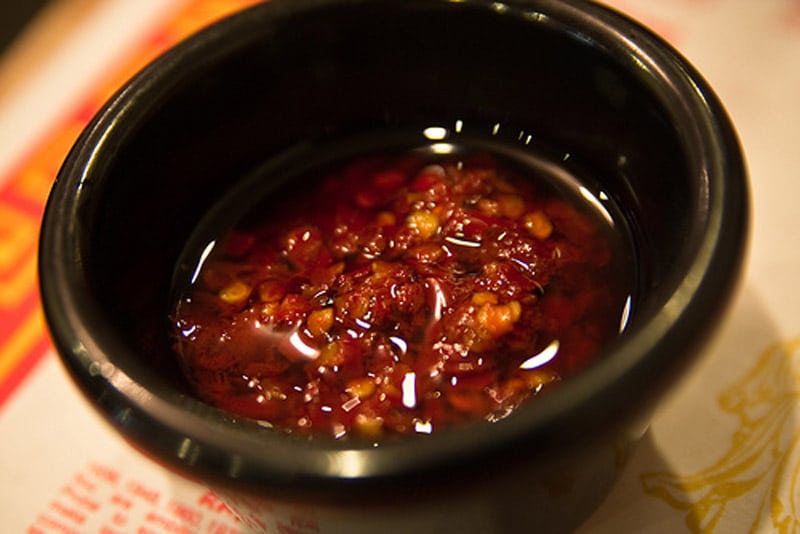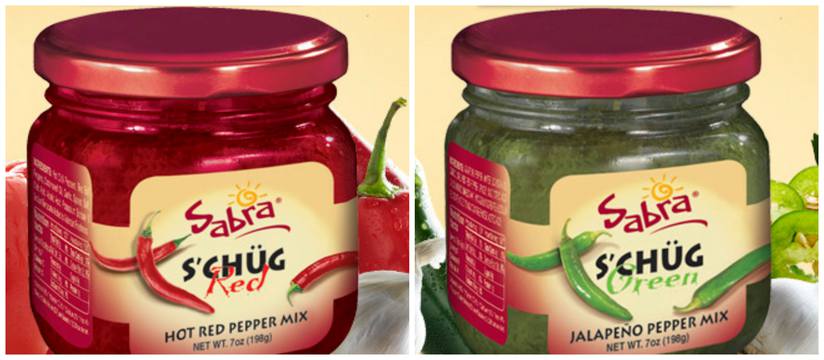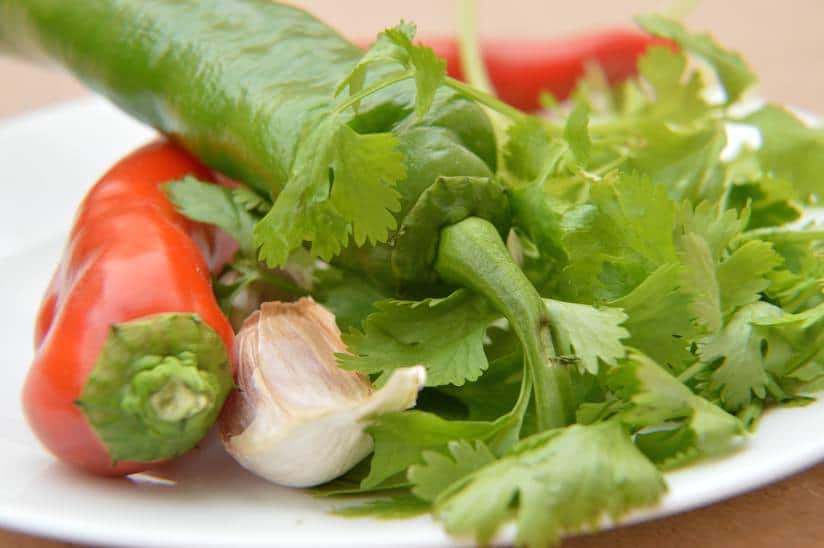
In every Israeli open-air market, you’ll find a corner where there’s a table manned by an elderly Yemenite man (or grandmother). Plastic containers of a popular hot sauce called schug – red or green – is what they sell. And by lunchtime, when they pack up for the day, they’re sold out.

The fiery relish, brought over by Yemenite immigrants, quickly became a natural part of popular Israeli food. Sit down at a hummus joint, and order your plate of hummus, tahini and a hard-boiled egg, with or without beans. The waiter will slide a little plate of schug next to your elbow without asking. You can ask for schug even in high-end restaurants like Jerusalem’s Eucalyptus, confident that they’ll have plenty in the kitchen.
Schug is named after the mas-chag, which is a traditional grinding stone used to break down the raw peppers and garlic into a paste. In the old days, fathers and husbands dictated the ingredients, although it was usually patient mothers and grandmothers who bent over the grinding stones, pounding away until they obtained the correct texture and balance of flavors.
Schug is made in small quantities because a little – a very little – goes a long way. The ingredients are few and the process takes 15 minutes or less, so there’s every reason to make it fresh each time. There are two versions, green and red. The difference is in the flavor of the peppers and of course, the look.
I’ve provided a basic recipe below, but traditionally, there’s no one way to make schug. Each family has its own, slightly different version of it. Some toast 10 each of cardamom and cumin seeds in a dry frying pan, let them cool and then reduce them to powder in a coffee grinder. The dry spices are then added to the fresh, crushed ingredients. If you have the patience, that does add authentic, old-timey flavor to the schug; either color. But many don’t, considering that the peppers, coriander and garlic speak for themselves.
I recommend using a food processor rather than a blender, because the food processor yields a more interesting, slightly chunky texture, while the blender will reduce the ingredients to a smooth paste. But it’s up to you and how you like it.

Use the hottest jalapenos you can find. Any time you deal with hot peppers, you’ll need to take a few precautions. Wear latex gloves while making the schug and when handling the kitchen equipment you used. If you’re working bare-handed, never touch your face or eyes until you’ve washed your hands with plenty of soap. Open the food processor or blender lid cautiously, as the tiniest drop of raw pepper juice in the eyes would cause hours of pain. Wipe down work surfaces carefully after you’re done, and wash the processor, spatula, knife and chopping block thoroughly.
Schug isn’t for the faint of heart. But you can cut some of the heat by using the whole coriander sprigs, not only the leaves, or reducing the number of peppers while keeping the rest of the ingredients as in the recipe.
Store the schug in a tightly closed container, in the refrigerator. It will stay fresh and flavorful for one week.
Schug Recipe
PrintIngredients
- 3 large hot green peppers
- 1 large bunch coriander leaves
- 1 head garlic (cloves peeled)
- 1 tsp salt
- 1 tsp ground black pepper
- 3 tbsp olive oil
- 1 tbsp fresh lemon juice
Instructions
- Rinse and thoroughly dry the coriander leaves. Remove most of the stems. Chop the leaves coarsely.
- Peel and chop the garlic coarsely.
- Rinse and dry the peppers. Chop coarsely.
- Place the coriander, garlic and peppers in the food processor and process on high for several minutes to obtain a chunky paste.
- Add salt, pepper (and cumin for red schug) and process again to incorporate.
- Stop the processor and stir the olive oil in by hand. For the green schug, pour the lemon juice over the surface before putting it away. This will help preserve the green color.
- The schug is now ready.
